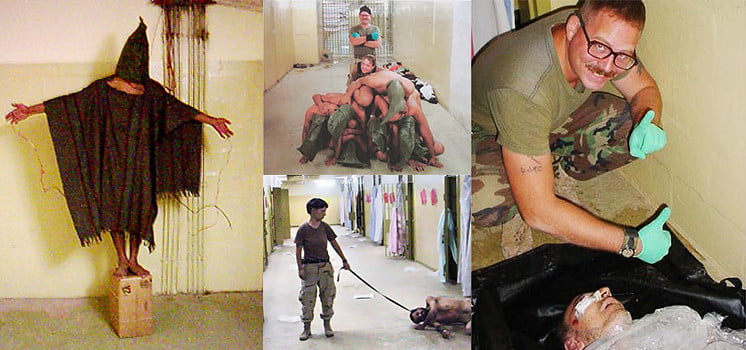
By Andy Worthington,
Thanks to Carol Rosenberg of the New York Times for exposing what the US no longer wants to remember: that the prison at Guantánamo Bay is, per capita, by far and away the most expensive prison in the world.
According to figures obtained by the Times, “the total cost last year of holding the prisoners,” and of “paying for the troops who guard them, running the [military commissions] war court and doing related construction, exceeded $540 million.”
With 40 men still held (and one released during the year to which the figures refer*), that’s over $13 million per prisoner, but In fact it seems to be even more costly. Rosenberg noted that, for the year to September 2018, the Defense Department stated that it cost $380 million “for Guantánamo’s detention, parole board and war court operations, including construction.”
To that are added the “manpower costs” referred to in April this year by the prison’s former commander, Rear Adm. John Ring, who explained that “[c]onsolidation through new construction would allow the prison to reduce its staff … by 74 troops, saving $8 million,” indicating that the cost per member of the military personnel was $108,000 a year — which, for 1,800 troops, adds another $194.4 million, bringing the total cost to $574.6 million.
That’s over $14 million per prisoner — or to put it another way, 180 times as much per prisoner as it costs to hold someone in the federal “supermax” prison in Colorado, where the cost per prisoner per year in 2012 was $78,000.
As Rosenberg explains, the estimated annual cost — of $574.6 million — “does not include expenses that have remained classified, presumably including a continued C.I.A. presence.” However, “the figures show that running the range of facilities built up over the years has grown increasingly expensive even as the number of prisoners has declined.”
A Defense Department report in 2013 calculated that the annual cost of operating Guantánamo’s prison and court system was $454.1 million, around $120 million less than last year. Moreover, at the time, there were 166 prisoners, meaning that the cost per prisoner was $2.7 million, less than a fifth of what it is now.
That report also “put the total cost of building and operating the prison since 2002 at $5.2 billion” to the end of 2014, a figure that, as Rosenberg describes it, “now appears to have risen to past $7 billion.”
Capt. Brian L. Mizer, a Navy lawyer who represented Salim Hamdan, a driver for Osama bin Laden, at his military commission trial in 2008, rather appropriately called the prison at Guantánamo “America’s tiniest boutique prison, reserved exclusively for geriatric alleged jihadists.”
The cost of geographical isolation
Part of Guantánamo’s absurd cost relates to its isolation, because, as Rosenberg explains, it is “totally cut off from the Cuban economy,” and everything has to be brought from US. As Rosenberg adds, “It operates in some respects like an aircraft carrier at sea, even desalinating its own water with fuel brought in by tanker.”
As she also explains, “Nearly all of the base supplies — like family household shipments, frozen pizza dough for the bowling alley food court and rental cars for the base commissary — arrive twice monthly on a government contract barge from Florida. A refrigerated cargo plane brings fresh fruit and vegetables weekly.”
The military costs, however, seem very clearly to be excessive. 1,800 troops work at the prison — 45 for each prisoner. As Rosenberg explains, they “work out of three prison buildings, two top-secret headquarters, at least three clinics and two compounds where prisoners consult their lawyers.” Some also work as guards at Camp Justice, the military commissions’ court, and also the location of the hearing room for the Periodic Review Boards, the review process set up in 2013 by President Obama, which led to the release of 36 prisoners in Obama’s last three years in office, although it has become meaningless under Donald Trump, as no prisoner has been approved for release since he took office nearly three years ago.
Rosenberg also explains other costs: “The prison’s staff members have their own chapel and cinema, housing, two dining rooms and a team of mental health care workers, who offer comfort dogs. Judges, lawyers, journalists and support workers are flown in and out on weekly shuttles.”
One critic of this outrageous expense is Representative Adam Smith (D-WA), the chairman of the House Armed Services Committee and, as Rosenberg describes it, “a longtime proponent of closing the prison.” In June, Smith said, “I don’t think there’s any need to have an incredibly expensive facility down at Guantánamo housing, you know, 40 people. So ultimately I think they should be transferred here.”
Rosenberg notes that comparing Guantánamo with federal prisons on the US mainland is “tricky,” because workers at the latter are “civilians who pay for their own food and health care, drive their own cars, live in their own homes and amuse themselves on their days off,” whereas the military — which employs mostly National Guard forces and reservists on nine-month rotations at Guantánamo — has to pay for everything, but it is, nevertheless, apparent that the initial hysterical over-manning of the prison has never been adequately challenged.
As Rosenberg describes it, Guantánamo’s “uniformed staff members” include “a Coast Guard unit that patrols the waters below the cliff top prison zone; Navy doctors, nurses, psychological technicians and corpsmen; a unit of Air Force engineers; lawyers, chaplains, librarians, chaperones and military journalists,” and each of these have “layers of commanders who oversee their work and manage their lives at Guantánamo.”
The prison also employs “Defense Department contract linguists, intelligence analysts, consultants, laborers, information technology professionals and other government workers.” In 2014, there were 300 of those civilian workers. (The naval base, meanwhile, has around 4,000 personnel, which also seems excessive, although they have their own budget “separate from the costs of the prison and the court.”)
The area in which the prison is located — within the naval base, but essentially separate from it — also “has its own headquarters, motor pool, mental health services, minimart, and public affairs team, which recently referred to the troops assigned there as ‘warfighters.’” And while an Army security force of fewer than 300 soldiers … live in prefabricated containers within the prison zone, most troops who work in the prison complex live on the naval base” — some in townhouses, while others “live in the kind of trailer park familiar to forces who served in Iraq or Afghanistan” — CHUs, or containerized housing units.
One expense that hasn’t so far been added to the prison’s bill relates to an approval by Congress, in 2018, for $115 million to be spent on “a dormitory-style barracks complex to replace trailer housing for 848 troops.” However, “no contract has been awarded, construction has not yet begun and Navy spokesmen could not provide the target completion date.”
The prison, nevertheless, continues, to swallow money with abandon — with its “watchtowers and Humvees and dirt roads and a series of permanent and semi-permanent prison facilities, all of them built since 2002 and surrounded by razor wire that rusts in the salt air,” the three separate cellblocks for the prisoners, and the “seven or eight different sites” where they can be found on any given day — including the court, the PRB hearing room, the base hospital, and “two adjacent compounds where the prisoners consult their lawyers.”
Other costs involve “wear and tear,” particularly noticeable in south east Cuba, where Guantánamo is located, which is “hot, humid, whipped by tropical storm winds and the occasional hurricane.”
As Rosenberg explains, “In the past two years, the military hired contractors to do $15 million in repairs to the guards’ townhouses, a $14.5 million expansion of the war court compound, $1.5 million in repairs to the trooper clinic, more than $1 million renovating air conditioning and ventilation in the officers’ homes, $648,000 on erosion and climate control around the general population prison complex, $273,110 to replace a latrine near a now defunct kitchen and $47,690 to renovate the prison staff chapel.”
By any measure, I think, paying $273,110 to replace a latrine is excessive, although, as Rosenberg also explains, “Defense Department contractors who bid for these jobs have to factor in the cost of bringing in their own workers and equipment, including bulldozers and buzz saws. As a measure of how expensive it is to do construction here, the projected cost of a new prison for 15 former CIA captives that was first proposed during the Obama administration has jumped from $49 million to $88.5 million in five years.”
The crippling cost of the military commissions
As Rosenberg explains, a huge part of the cost of running Guantánamo relates to the military commissions, which, based on congressional documents, cost more than $123 million in 2018, even though only eight men are facing charges.
As she describes it, “Each hearing requires a major movement of people and materials from the United States to the base on passenger planes the Pentagon charters for $80,000 one way. There were 52 such commercial flights in 2018 between Joint Base Andrews, outside Washington, and Guantánamo. Until the start of a trial — the trial of the men accused of plotting the Sept. 11 attacks is scheduled to begin in early 2021 — the majority of the legal work is carried out in a warren of rental offices near the Pentagon, some of which have sat empty for more than a year as they await security upgrades.”
Just two weeks ago, NPR undertook an investigation into the costs of the court, under the heading, “Whistleblower Cites ‘Waste Of Funds’ At Guantánamo Court And Prison,” noting that “a former top attorney” in the commissions had “filed a federal whistleblower complaint alleging gross waste of funds and gross mismanagement.”
Sacha Pfeiffer of NPR’s investigations team was told that, “every year, hundreds of thousands of dollars [worth] of government devices — hard drives, cellphones, laptops — are destroyed because of spills of classified information.” She added, “There are a lot of lawyers working down there, hundreds of them. Some of them are death penalty specialists, who are private attorneys, paid by the Pentagon. They cost more than regular government lawyers. Some of them bill about a half a million dollars a year.”
Pfeiffer spoke to Marine Brig. Gen. John Baker, the chief defense counsel for the commissions, who said, bluntly, “Holy crap. People need to know the travesty that is Gitmo. You know, it’s beyond comprehension that it is 2019 and people that were accused of crimes that occurred in 2001, captured in 2003, are nowhere near trial.”
The whistleblower is retired Air Force Col. Gary Brown, who was the legal adviser to the commissions’ convening authority, Harvey Rishikof. However, both men were sacked in February 2018 after pushing for the death penalty to be taken off the table for those accused of the 9/11 attacks. This was because, as Pfeiffer described it, Brown “believes it’s going to be hard to get death penalty convictions because so much evidence is tainted by torture,” and, “[e]ven if there are convictions, there could be 15 years’ worth of appeals, which would take another $1.5 billion.” Instead, Rishikof and Brown proposed to settle the cases via plea deals, whereby the prisoners “would plead guilty and get life in prison. That would speed things up and lower costs.”
So when will this nightmare end? After the Times article was published, Donald Trump, on Air Force One, told reporters, “I think it’s crazy. It costs a fortune to operate it and I think it’s crazy,” and also blamed President Obama for failing to close it. “He was going to have everybody removed and Guantánamo Bay closed up by the time he left office and he didn’t do that,” Trump said, adding, “So we’re stuck with it.”
That sounds positive, but with Trump it would be foolish to expect that anything sensible or decent will happen when it comes to Guantánamo. This, after all, is the man who tweeted, two weeks before taking office in January 2017, “There should be no further releases from Gitmo. These are extremely dangerous people and should not be allowed back onto the battlefield.” As the lawyers who submitted a habeas corpus petition on behalf of eleven prisoners last year stated, the ongoing imprisonment of men at Guantánamo “is based only on Trump’s raw antipathy towards Guantánamo prisoners – all foreign-born Muslim men – and Muslims more broadly.”
And, sadly, I don’t see that ending anytime soon.
* Ahmed al-Darbi was released at the start of May 2018, meaning that he was held for seven months of the year for which the figures obtained by the Times apply.
Source: https://www.eurasiareview.com
Disclaimer: We at Prepare for Change (PFC) bring you information that is not offered by the mainstream news, and therefore may seem controversial. The opinions, views, statements, and/or information we present are not necessarily promoted, endorsed, espoused, or agreed to by Prepare for Change, its leadership Council, members, those who work with PFC, or those who read its content. However, they are hopefully provocative. Please use discernment! Use logical thinking, your own intuition and your own connection with Source, Spirit and Natural Laws to help you determine what is true and what is not. By sharing information and seeding dialogue, it is our goal to raise consciousness and awareness of higher truths to free us from enslavement of the matrix in this material realm.
 EN
EN FR
FR


























Those click-bait photos have nothing to do with this article because they’re from the Abu Ghraib prison scandal in Iraq, NOT Gitmo. Gitmo costs so much because the government treats the radical Muslim terrorist prisoners kept there better than any law-abiding U.S.citizen. Thanks to Obama, they got a brand new soccer field, custom Muslim prayer mats, organic halal foods and top notch state-of-the-art medical care.
Too bad ex-sheriff Joe Arpaio couldn’t be in charge of Gitmo with his famous baloney sandwiches and tents with only Hallmark tv shows.